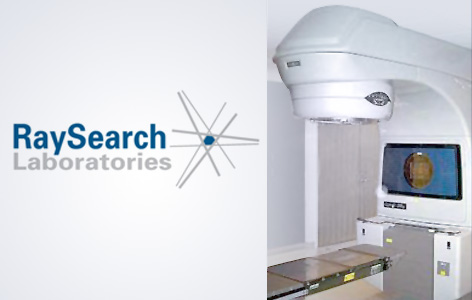Home page Description:
The new system will help standardize the setup of linear accelerators used to treat cancer.
Posted On: October 14, 2015

Techna and UHN’s Technology Development and Commercialization office are pleased to announce that UHN has licensed a new technology for the radiation therapy treatment planning process to RaySearch Laboratories AB.
The technology will help to standardize the setup of new linear accelerators (linacs), which are devices that generate beams of radiation for the treatment of cancer.
When initializing a new linac system, medical physicists must determine precisely how a linac delivers radiation in the real world in order to build what is known as a beam model. The model, which serves as a core component of the treatment planning process, is constructed through the collection and integration of vast amounts of information and represents one of the most challenging aspects of the process. The quality of the beam model depends on the physicist’s ability to manage multiple parameters and assess their effect on the output. To help standardize this process and to relieve staff of this time-consuming task, Techna and Princess Margaret Radiation Medicine Program scientists Drs. Daniel Letourneau, David Jaffray and Michael Sharpe developed the Automatic Beam Modelling System (ABMOS). ABMOS automatically adjusts the beam model parameters in an iterative fashion to maximize the agreement between measured and calculated dose maps.
“The ABMOS system can not only help shorten the time required to commission a new beam model for linacs but can also potentially lead to improved radiation therapy treatment quality as it helps to standardize the beam modeling process,” says Dr. Letourneau, co-inventor of ABMOS. “Licensing to RaySearch will help bring standardized beam models to linacs across the globe.”
The technology will help to standardize the setup of new linear accelerators (linacs), which are devices that generate beams of radiation for the treatment of cancer.
When initializing a new linac system, medical physicists must determine precisely how a linac delivers radiation in the real world in order to build what is known as a beam model. The model, which serves as a core component of the treatment planning process, is constructed through the collection and integration of vast amounts of information and represents one of the most challenging aspects of the process. The quality of the beam model depends on the physicist’s ability to manage multiple parameters and assess their effect on the output. To help standardize this process and to relieve staff of this time-consuming task, Techna and Princess Margaret Radiation Medicine Program scientists Drs. Daniel Letourneau, David Jaffray and Michael Sharpe developed the Automatic Beam Modelling System (ABMOS). ABMOS automatically adjusts the beam model parameters in an iterative fashion to maximize the agreement between measured and calculated dose maps.
“The ABMOS system can not only help shorten the time required to commission a new beam model for linacs but can also potentially lead to improved radiation therapy treatment quality as it helps to standardize the beam modeling process,” says Dr. Letourneau, co-inventor of ABMOS. “Licensing to RaySearch will help bring standardized beam models to linacs across the globe.”




